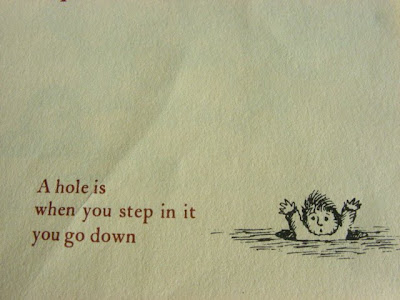
I got word today that my Grandma Hanson's opal has been accidentally chipped. Sad news. It's not one of those pictured here. Mine is cradled in cotton inside a little plastic box somewhere far away. About a month ago I sent it off with its ring to have the claws rebuilt and the stone reset. It fell out of its setting twice last year (the last time was in the fall, shortly after I'd had it reset). Come November, I'd accepted that it was gone for good, but in January it was found - in the vegetable crisper drawer of the refrigerator.
These are soft stones, and difficult to work with. Some jewelers won't even go near them. I just got off the phone with the reputable jeweler who agreed to work with mine. Our conversation began, "Hello, Ms. Tarnowski, I'm afraid we've hit a speed bump with your ring".
The ring was given to me by my Mum when her Mum, Evelyn Maria Hanson, passed away in 2004. My Grandma wore it always. She bought the opal on one of her solo trips overseas, after her husband, Harvey Roland Hanson, passed away. He didn't like to travel, though she dragged him to Africa more than once in their middle years. When he passed in 1977, she saw the world on her own. This opal was purchased in Australia, where she spent a few months in 198?. When she brought it back to Canada she had it set into gold and circled with 8 diamonds.
There are two reasons I cherish this ring. The first is that it symbolizes a link between my Grandma and me. She and I are the only women in our families who have ventured far from home many times. In the sense that she was a poor farm woman who raised 7 children on the Alberta prairie this seems kind of remarkable, but in another sense maybe it was plainly necessary. I don't think it was sentimental nostalgia. My Grandma was as pragmatic a Protestant Scandinavian as they come. It seems like her desire to travel (and mine) could just be a clear-eyed, inherent need to go (back) to places that hold our collective history. As if there's something embedded in the familial psyche that once inhabited the old world, and that makes that world instantly known and comforting, even needful.
The second reason I cherish the ring is that I lived for awhile in a little hamlet called Opal. I moved there in 1991, when I was 19 years old, and set up home in a small out-building that was easily heated by a woodstove in the cold months. Once it got warmer in the spring, I took over the upper floor of the adjacent abandoned farmhouse. The main floor housed hay for two pygmy goats (and their new babies) who I acquired from a neighbour. My orange boy tabby cat Ho Chi Minh lived with me. He caught mice and squirrels in the woods and the clover field behind the house, rolled around in the cool gritty garden dirt, high on catnip I'd planted for him. He was a great cat: sturdy, smart and noble. He would follow me like a dog, back and forth to mail letters at the post box in Opal, a 3-mile walk up the road from our place.
So! the ring. Apparently the chip in the original gem is small enough that it could be re-cut and reset in another ring. The jeweler offered me the choice of another opal for the original setting. Truly, the design isn't something I'm terribly attached to. I always thought it was a little too 70's and swoopy, but loved it simply because my Grandma wore it so many years. For that reason, if possible, I'd like to retain the original setting and stone, even if it's chipped and don't mind that the gem shows its history. If it's not possible to reset the chipped stone, I could have the new opal set into the ring and have a separate ring made with the re-cut original opal. Or I could design a single ring using the metal and all 10 gems.
I'm in no rush.
Tell me what you would do.

















































